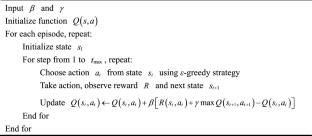Intelligent inverse design of phononic crystals based on machine learning coupled with localized collocation meshless method
Abstract
The development of phononic crystals provides a possible solution for the precise control of acoustic/elastic waves. Designing phononic crystals with a target characteristic has become a research hotspot in recent years. Nevertheless, the precision with which the acoustic and mechanical waves can be altered remains a major challenge for existing inverse design methods. The rapidly growing machine learning methods revolutionize the design of these materials. As an important branch of machine learning, reinforcement learning is being attempted to solve mechanical problems more intelligently through the interaction of environment and agent. In this paper, we adopt machine learning to successfully design 2D phononic crystals with expected band structure. We firstly applied the meshless generalized finite difference method in solving the dispersion equation for a periodic structure. Then, in order to widen the first-order bandgap width over a desired frequency range, we employ the reinforcement learning algorithm modified by particle swarm optimization to effectively estimate the shape parameters. The parallel technology saves computational costs remains independent of the initial state and target, in addition to being effective and stable. This improved reinforcement learning based interaction design scheme can easily accommodate several other reverse engineering problems.


 求助内容:
求助内容: 应助结果提醒方式:
应助结果提醒方式:


